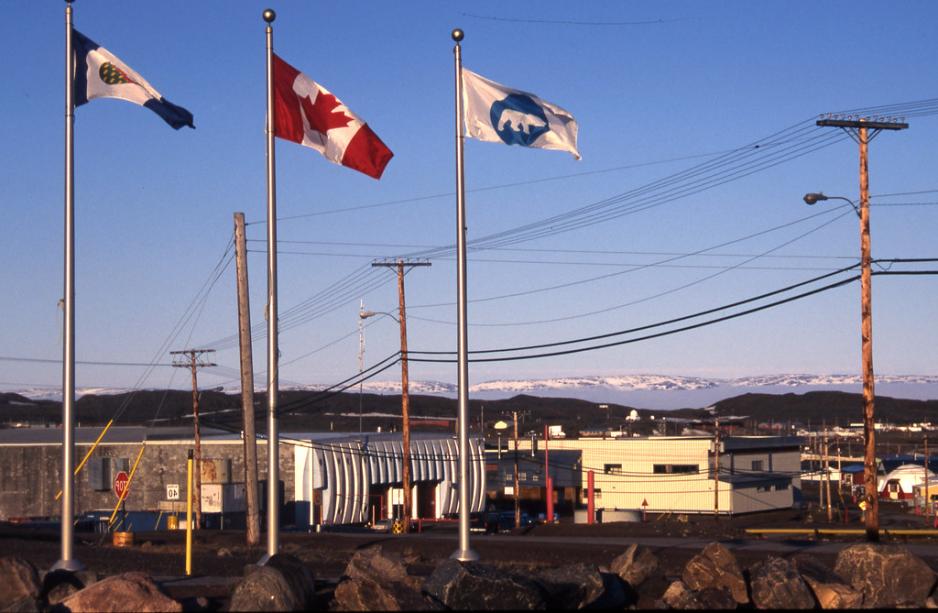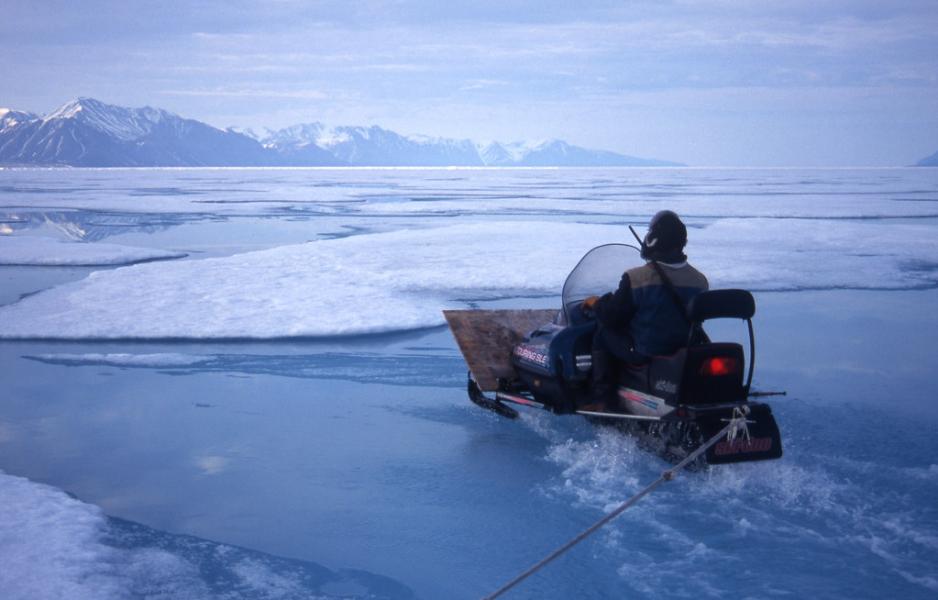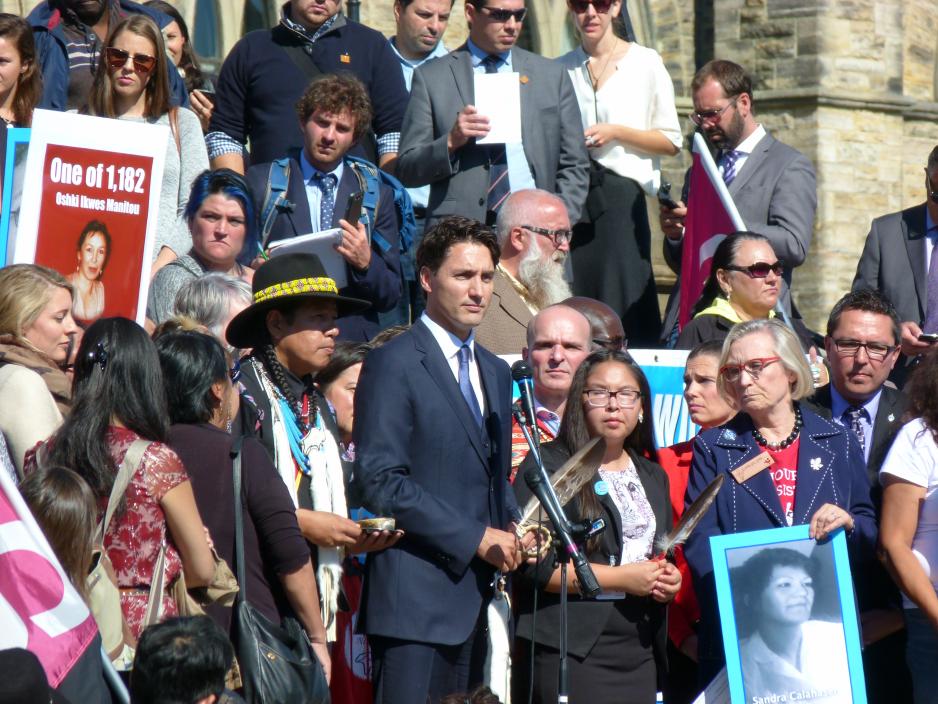Why the Canadians are Provoked by the New and Ambitious Arctic Policy Document

Iqaluit is the territorial capital and the largest community of the Canadian territory of Nunavut. From GRIDA's album: Canada and the Arctic Council. Photographer: Peter Prokosch
The government of Canada quietly launched a new Arctic policy document just one day before the electoral prosess began. Not very elegant, critics say.
Framed in quotes from Mary Simon, "the mother of the Arctic Council”, who was awarded the High North Hero award last year for her engagement for the people in the High North, the government of Canada released its road map for the Arctic on Tuesday, just one day before the fall election campaign began.
The guide for federal policy in the Arctic until 2030 includes eight priorities.
(listed at the bottom of the article)
Health, infrastructure and economic development are on top of the list. The document also has ambitious plans for better roads, housing and high-speed internet. However; there are no funding guidelines or plans for what comes first or how to follow through all the ambitious.
Since the framework was released, critics have lined up. “It restates old information”, “the plan offers nothing new” are some of the statements that have made the news.
But is there really nothing positive to say about this framework?
Applauds the co-development process
Mathieu Landriault, Director of the Observatory on Politics and Security in the Arctic (OPSA) thinks it is.
“There are some shortcomings, but the document describes the situation in the Canadian Arctic quite well in my view. It emphasizes cooperative federalism and is written with partners, which is a whole new thing,” he says to High North News.
More than 25 Indigenous organizations, along with the governments of Nunavut, the Northwest Territories, Yukon, Manitoba, Quebec and Newfoundland-Labrador, joined in on the co-development process.
“This road map gives them voices and lets them take an active role, instead of just the role as passive consultants. It also includes provincial governments, territory governments in Arctic governance and the Arctic Council. I think that is a pretty positive step,” he adds.

Mathieu Landriault, director OPSA
I think this could be a good thing, if it follows up on at least some of the initiatives.
Landriault believes people are disappointed mostly because the document doesn't bring new initiatives.
“Maybe as Arctic observers we put too much importance on those. I see a lot of my colleagues complain that it took a while and that the process was a bit too long. I would say, in this type of co-development process, that is normal. There's a lot of back and forward, there are several partners who have to review the documents and give their comments and maybe some suggestion on how to modify it. This takes a long time, plus it's a new whole way of doing things in the federal government.”
Ambitious goals
Many ambitious goals are stated in the framework. Is the document too ambitious?
“Well, these type of statements are always ambitious is the sense that they put the bar extremely high. The language is also full of noble objectives. They will not be able to meet all those objectives, of course. I think we should interpret it as more as a roadmap or kind of a plan of where the government wants to go, rather than what they're going to do exactly.”
The “promises” also highly depend on the results of the upcoming election, Landriault points out.
If the Liberals are not re-elected, it's going to be hard for another party to disregarded three years of work.
“Documents like this are basically a reflection of the programs and initiatives already announced so in my view, it is just a snapshot of what the government already has done during the past four years. I think this could be a good thing, if it follows up on at least some of the initiatives. We can always invest more and build more infrastructure. But at the end of the day, you know, we could put more money into everything.”
What about the timing?
Let us take a moment and reflect on the timing. A new Arctic policy framework was first promised by the Trudeau government shortly after the last federal election, but was released just this Tuesday, a day before the fall election campaign was set to begin.
On the 21st of October, either the Liberal party will be re-elected or another other party will assume power.
“That's probably the most important variable in the equation. PM Justin Trudeau has spoken about this for quite some time and it just got released the day before the electoral process started. There probably was a bit of improvisation when they published it so close to the campaign. However, it seems to be good timing in the sense that if the Liberals are not re-elected, it is going to be hard for another party to disregard three years of work and all of the inputs,” argues Landriault.

Inuit hunter traveling by snow scooter on melting sea ice, Pond Inlet, Canada. Photographer: Peter Prokosch GRIDA
Heather Exner-Pirot, Managing Editor of the Arctic Yearbook and Research Associate at the Observatory on Politics and Security in the Arctic (OPSA), is rather provoked about the timing and the way the document was launched.
“It has the right goals, though they are very abstract, like "to eradicate hunger". But I cannot believe that Canada, which wants to be and could be an Arctic leader, releases a policy like this, which is just a series of web pages with different chapters, the last day before an election. Without an official announcement, without a visit up to the north and without the partners - except one Minister,” she says to HNN.
No consensus
In the document, some of the partners have written their own chapters that are published outside the main policy document. So, the chapters that are a a contribution from co-development partners may nevertheless not actually represent federal policy.
“While the framework chapters are an integral part of this process, they do not necessarily reflect the views of either the federal government, or of the other partners,” the framework document says.
Exner-Pirot believes that is a clear sign the federal government has had trouble finding consensus among the more than 31 groups.

Heather Exner-Pirot is the Managing Editor of the Arctic Yearbook
Literally at the eleventh hour, they just put together something and put it out there. Not an elegant solution, in my opinion.
“You can say that this was predictable. It was predictable that you wouldn't get the territories and the provinces and the Federal Ministry to agree on a single policy. They have not figured out how to get this over the finish line and instead they publish the partners in separate chapters that do not necessarily reflect the others' view. And, literally at the eleventh hour, they just put together something and put it out there. Not an elegant solution, in my opinion.”
She applauds the initiative, though, and describes the intentions with the co-development program as good: “It was risky. But the risk did not pay off. I fear that if this government - or any government - wants to go forward with this kind of project in the future, some will say “no, this cannot work or will not work". Or, maybe they are lessons learned from it and they will know what to do different next time.”
Does not address the hard decisions
Rob Huebert, a political science professor at the University of Calgary who specializes in the Arctic, says the plan offers nothing new.
“The biggest problem I had going through it, is that they have spent four years trying to set up a big list of what everybody knows are the core issues. They have put in some platitudes that they have not really followed up on. They have not really given us any decisions about what they are actually going to do now, because it lacks a consensus between the different chapters,” he argues.
They have spent four years trying to set up a big list of what everybody knows are the core issues
Huebert also criticizes the document for not addressing the “hard decisions”, in particular what all Arctic nations are trying to figure out: How to balance environmental protection and indigenous rights with exploitation and use of resources.
“They talk about the need for healthy communities and economic prosperity. They also talk about environmental protection, but they do not explain how you can work out those two together. One of the biggest decisions the federal government took was to put a moratorium on oil and gas developments in the in the Arctic, and you have to ask the question: Okay, if you are going to take that out of the picture, where do you find the basis for prosperity? And: What are your alternatives if oil and gas cannot be developed in the north? Did you want to protect the environment? Okay, then how can you provide the economic whereabouts for people to have the type of safe and secure prosperity that they talk about?”
Insulted
Huebert is not particularly impressed with the timing of the release.
“To be honest, I think the timing tells us that this is not really a serious policy but rather an election platform for the Liberal Party. They cannot implement any of this now during the election period. It's like: 'Look at what we have done and trust that we will implemented if we are re-elected'."
"PM Trudeau promised to get this done, and he will say he delivered, but there is a difference between saying it and actually doing it. The Liberals certainly believe they will be back to implement everything, and maybe that will be the situation, but to wait until literally the day before to drop it? As a Canadian I find it very problematic. I find it insulting,” he adds.

Rob Huebert, associate professor at the University of Calgary and a senior research fellow with the Centre for Military and Strategic Studies.
So if there's a change in government, what will happen to this document and its visions, in your opinion?
“I think they will do what all Canadian governments do, they'll just start it all over again. The Conservatives will say that they will have to, and I suspect that you would see a decreased focus on the indigenous component of the policy and an increased attention to a re-examination of some of the international security ramifications of the changing Arctic. I don't think either government really are able to figure out how to balance that.”
May confuse international observers
Earlier this week, HNN wrote about Canadas place in a changing world; the “new threats” the country is facing, two of them being China and Russia.
Michael Byers, professor and Canada research chair at the Department of Political Science at the University of British Colombia points out that the document may confuse international observers. “Parts of it talks about the Arctic as a zone of coperation, while other sections discuss rising threats and uncertain security” he says.
There will be a team of people in Beijing reading these documents right now.
"There will be a team of people in Beijing reading these documents right now and trying to figure out what they mean. This is not that crystal-clear, forward-looking statement of an Arctic power that Canada might want to make on the international stage.”
Step one
As Canadian politicians are now in an electoral process, they cannot comment on the framework, not defend the content or themselves from the criticism. The 41-day campaign will be nearly half as short as the marathon 78-day race that brought the Trudeau Liberals to power in 2015.

Prime Minister Trudeau addresses an audience on the issue of Missing and Murdered Indigenous Women with Carolyn Bennett second on his left. (Credit: Delusion23/Wikicommons)
However, Crown-Indigenous Relations Minister Carolyn Bennett said in a news release: “In co-developing Canada’s Arctic and Northern Policy Framework, our partners helped us to understand and reflect the unique opportunities and challenges within the different regions, jurisdictional responsibilities and treaty rights across the Arctic and the North.”
To the North Shore News, Bennett defended releasing the plan mere hours before an election call. She said it took so long because so many First Nations governments and groups as well as three territories and four provinces were consulted.
"You begin with the policy and then you work toward implementation," she added in an interview with CBC News. "It's a matter of us now, as we move through each budget cycle of each government, having a road map for closing these gaps."
Northwest Territories Premier Bob McLeod was less than generous in his praise. "It's a living document," he told Canadian Press. "We will work to improve on it."
In Nunavut, Premier Joe Savikataaq called the policy a good start. "We will be a lot happier when there is more tangible stuff that comes out."
Eight goals
Strong, sustainable, diversified and inclusive local and regional economies.
Canadian Arctic and northern Indigenous peoples are resilient and healthy.
The Canadian Arctic and North and its people are safe, secure and well-defended.
Strengthened infrastructure that closes gaps with other regions of Canada.
The rules-based international order in the Arctic responds effectively to new challenges and opportunities.
Knowledge and understanding guides decision-making.
Canadian Arctic and northern ecosystems are healthy and resilient.
Reconciliation supports self-determination and nurtures mutually respectful relationships between Indigenous and non-Indigenous peoples.

